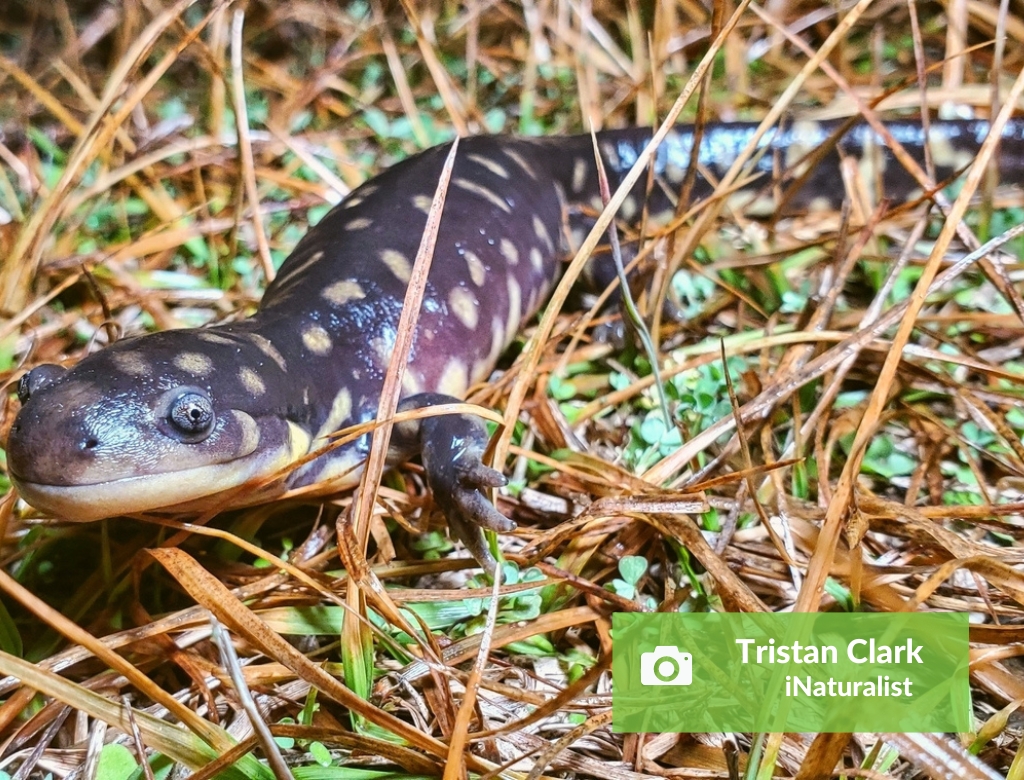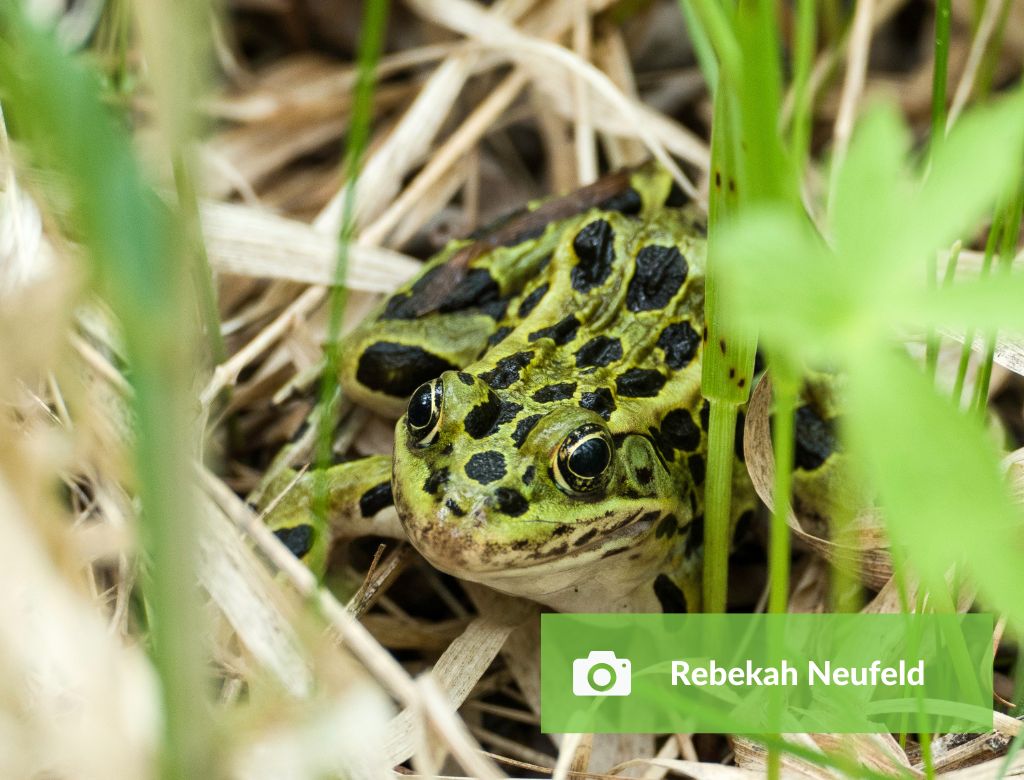
Eastern Tiger Salamanders
Identification
Eastern tiger salamanders can grow up to 35 cm in length making them one of North America’s largest salamanders. They are dark in colour with dull yellow, orange or green spots on their stocky body. The prairie population can usually be differentiated from other subspecies based on where salamanders are found.
Habitat
As an amphibian, eastern tiger salamanders depend on both aquatic and terrestrial habitats to complete their life cycle. This need for both habitats increases the number of threats caused from an unhealthy, fragmented ecosystem. The water source must be free of predatory fish and be present for three to seven months a year for breeding, laying eggs and raising larvae. Terrestrial habitat includes grasslands, savannas and woodland edges usually adjacent to breeding sites, and are used for foraging, burrowing and overwintering.

Northern Leopard Frog
Identification
The northern leopard frog is green with dark coloured spots throughout its upper body and has a light-coloured stomach. There are two prominent ridges that run along the upper body towards the eyes. Usually no more than 10 cm in length, northern leopard frogs are considered a large frog in Manitoba.
Habitat
As an amphibian, different habitats are needed for the various stages of their life cycle. Breeding, laying eggs and tadpole growth take place in healthy water sources such as marshes or shallow wetlands. As adults, they spend their summers in fields and meadows, and winters in well oxygenated water sources, such as ponds or swamps, that are deep enough to not freeze completely to the bottom.
